| Listing 1 - 10 of 304 | << page >> |
Sort by
|
Book
ISBN: 1554419298 Year: 2006 Publisher: Chicoutimi : J.-M. Tremblay,
Abstract | Keywords | Export | Availability | Bookmark
 Loading...
Loading...Choose an application
- Reference Manager
- EndNote
- RefWorks (Direct export to RefWorks)
À partir du dépouillement d'une centaine d'affaires criminelles jugées en cour d'appel dans le sud-ouest de la région parisienne durant dix ans (1987-1996), cet article présente les caractéristiques démographiques et sociales de 122 meurtriers et de leurs victimes. Il met notamment en évidence la très forte surreprésentation des milieux populaires et même des couches les plus pauvres de la population, tant dans la population des meurtriers que dans celle de leurs victimes, ainsi que le poids de l'inactivité et du chômage. Il souligne aussi l'importance des déstructurations familiales (abandons, placements divers) et, plus encore, des conflits familiaux. Sur le plan empirique, ces résultats sont comparés à ceux d'études réalisées dans d'autres pays, notamment l'abondante production quantitative nord-américaine. Sur le plan théorique, cet article rejoint les discussions initiées par des auteurs américains travaillant sur les notions de désorganisation et de désagrégation sociale et par des auteurs français travaillant sur les notions de désaffiliation, de disqualification ou de désinsertion pour proposer de dépasser la seule analyse des caractéristiques sociales et familiales des personnes au moment des crimes afin de considérer leurs histoires de vie et intégrer notamment les composantes familiales et scolaires qui ont marqué toute leur trajectoire. Based on about one hundred criminal cases which were tried by a Court of Appeal in the southwest of the Paris region over ten years (1987-1996), this article presents the demographic and social characteristics of 122 murderers and their victims. It brings out the very high proportion of individuals from the working classes or from the poorest strata of the population among the population of murderers as well as of victims, and the weight of economic inactivity and unemployment. The importance of family disruption (desertion, various types of foster care) and still more importantly, of family conflicts, is emphasized. On an empirical level, those findings are compared with those of studies conducted in other countries, particularly the abundant quantitative literature from North America. On a theoretical level, this article takes its place among discussions initiated by American authors who have worked on the notions of disorganization and social disintegration, and by French authors who have worked on the notions of disaffiliation, disqualification and dis-insertion, and who suggest that researchers move beyond the mere social and family characteristics of the individuals at the time of the crime and take into account their life histories and particularly the family and school elements that left their marks on their entire life itinerary. A partir del análisis de un centenar de asuntos criminales juzgados en tribunales de apelación del suroeste de la región parisina durante diez años (1987-1996), este articulo presenta las características demográficas y sociales de 122 asesinos y de sus victimas. Este análisis revela la sobre representación de los medios populares e incluso de las capas más pobres de la población, tanto en lo que respecta a los asesinos como a las victimas, así como el peso de la inactividad y del paro. Aparece también la importancia de la descomposición familiar (abandonos ...) y en particular de los conflictos familiares. Estos resultados son comparados a los de estudios realizados en otros países, y sobre todo a los de numerosos trabajos norteamericanos. En el plano teórico, el articulo aborda las nociones americanas de desorganización y de desagregación social y las de autores franceses sobre la desafiliación, la descalificación o la exclusión, a fin de sobrepasar el simple análisis de las características sociales y familiares de las personas en el momento del crimen y considerar sus historias de vida, integrando en particular los componentes familiares y escolares que han marcado sus trayectorias.
Book
Year: 1933 Publisher: Oslo : Tiden,
Abstract | Keywords | Export | Availability | Bookmark
 Loading...
Loading...Choose an application
- Reference Manager
- EndNote
- RefWorks (Direct export to RefWorks)
Murderers --- Murderers --- Murderers --- Murderers. --- Psychology --- Psychology.
Book
Year: 1960 Publisher: Springfield, Illinois : Charles C Thomas Publisher,
Abstract | Keywords | Export | Availability | Bookmark
 Loading...
Loading...Choose an application
- Reference Manager
- EndNote
- RefWorks (Direct export to RefWorks)
Charles Starkweather's journey was soon ended. The bitter sorrow that his brief reign of brutal fury brought has been assuaged by time, but not ended. Charles Starkweather was executed under sentence of the court. His body was given a reverential burial by his family. But, what of other potential killers? There will always be differences in the inherited sensitivities of children and no amount of effort can quite equalize opportunities. In a less complex social order, these differences ordinarily do not constitute serious threats to the social interests. In modern society, however, slight differences in sensitivity and environment may have profound consequences. They may make the difference between the useful citizen and the murderer. I spent about thirty hours interviewing Charles Starkweather in the Nebraska State Penitentiary before and after his trial. I have talked with members of his family, with former school teachers, counselors, and psychological examiners, who knew him; and with people, now grown, who were children with him in school. I have followed his school years from his first day in kindergarten until he quit school upon completion of the ninth grade, at sixteen years of age. I have talked with people who knew him at work after he left school, and with people where he bought his clothes. I was present in the courtroom throughout most of his trial. There I listened to the testimony and observed his behavior from a vantaged position in the press section. This book attempts to say what I think about the killer, Charles Starkweather. Except for two chapters: one on the Murderous Trail, and another on The Investigation, the book deals almost entirely with the strange nature of this young chain-killer.
Murder. --- Murderers --- Murderers. --- Biography.
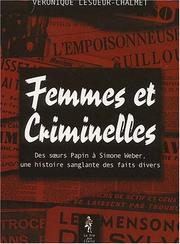
ISBN: 9782842281250 284228125X Year: 2002 Publisher: Paris: Pré aux Clercs,
Abstract | Keywords | Export | Availability | Bookmark
 Loading...
Loading...Choose an application
- Reference Manager
- EndNote
- RefWorks (Direct export to RefWorks)
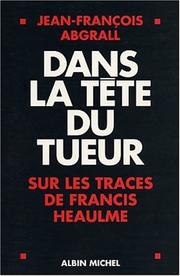
ISBN: 222612232X 9782226122322 Year: 2002 Publisher: Paris: Albin Michel,
Abstract | Keywords | Export | Availability | Bookmark
 Loading...
Loading...Choose an application
- Reference Manager
- EndNote
- RefWorks (Direct export to RefWorks)
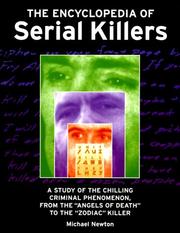
ISBN: 9780816039784 081603978X Year: 2000 Publisher: New York (N.Y.): Facts on file,
Abstract | Keywords | Export | Availability | Bookmark
 Loading...
Loading...Choose an application
- Reference Manager
- EndNote
- RefWorks (Direct export to RefWorks)
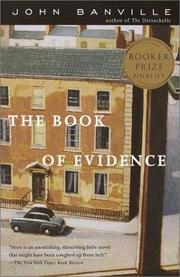
ISBN: 0375725237 Year: 2001 Publisher: New York [N.Y.]: Vintage
Abstract | Keywords | Export | Availability | Bookmark
 Loading...
Loading...Choose an application
- Reference Manager
- EndNote
- RefWorks (Direct export to RefWorks)
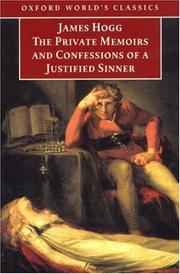
ISBN: 0192835904 Year: 1995 Publisher: Oxford Oxford university press
Abstract | Keywords | Export | Availability | Bookmark
 Loading...
Loading...Choose an application
- Reference Manager
- EndNote
- RefWorks (Direct export to RefWorks)
Book
ISBN: 9782875570901 Year: 2014 Publisher: [Bruxelles] Paris La boîte à Pandore
Abstract | Keywords | Export | Availability | Bookmark
 Loading...
Loading...Choose an application
- Reference Manager
- EndNote
- RefWorks (Direct export to RefWorks)
Book
ISBN: 9789077941874 Year: 2008 Publisher: Gent Borgerhoff & Lamberigts
Abstract | Keywords | Export | Availability | Bookmark
 Loading...
Loading...Choose an application
- Reference Manager
- EndNote
- RefWorks (Direct export to RefWorks)
| Listing 1 - 10 of 304 | << page >> |
Sort by
|

 Search
Search Feedback
Feedback About UniCat
About UniCat  Help
Help News
News